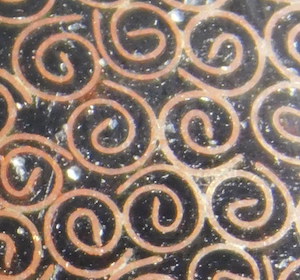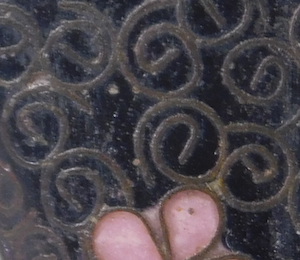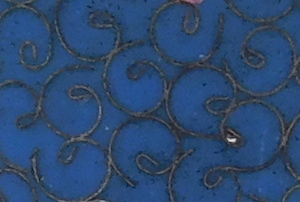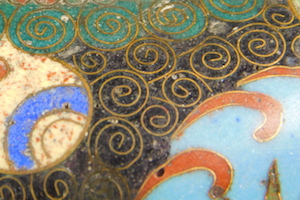Japanese cloisonne makers working on metal seem to have standardised early on a spiral shape to be used for ‘strength wiring’ (Schneider says that this standardisation on spirals dates from 1880-1900).
The term ‘strength wiring’ is used on this site for wiring that is not primarily for decoration but to help ensure that the enamel did not become detached. Chinese cloisonne makers had the same problem but instead commonly chose a small cloud shape, or an entwined Buddhist swastika pattern.
The measurements given below is for the typical distance across 3 spirals that are close together, so divide by 3 for one spiral. A distance of 10 mm or lower across 3 spirals (providing that they are neatly formed and in a tightly packed regular pattern) tends to indicate a higher quality object.
Note. The numbers in the image references below relate to Object numbers on this website.
NB At a later stage designers from both countries sometimes included spirals for their attractive look, rather than because they were needed for strength. We can imagine the stages:
(1) the spiral wires are needed for strength. (2) if the spiral wires are needed then we must make them attractive. (3) we do not need the spiral wires any more. (4) customers are complaining that they liked the wires, so we must bring them back where it fits the design.
More recently, a whole new design of cloisonne developed where spiral and similar wiring against a black background was the main decoration.
_ _ _ _ _ _ _




























